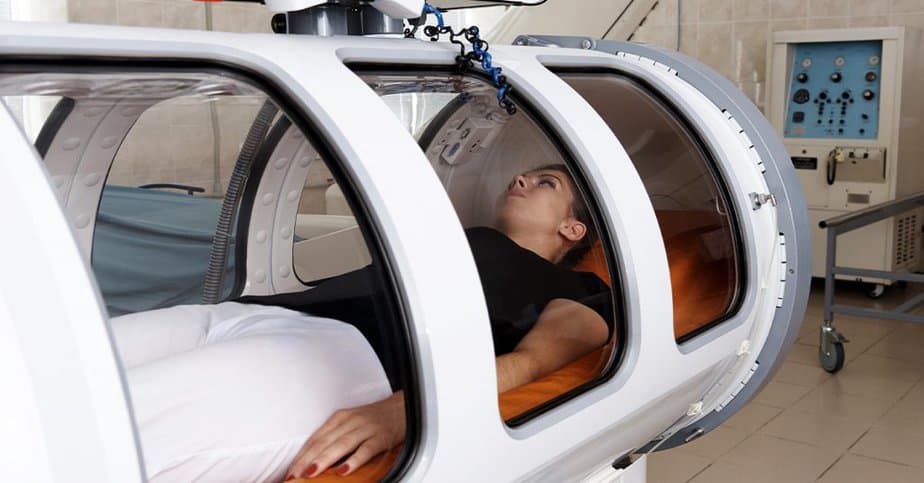
Hyperbaric oxygen therapy is a treatment that uses high-pressure oxygen to help improve the function of body tissues. This therapy has been used for many years to treat a variety of medical conditions and has recently become popular as a means of improving overall health and preventing disease. In this blog post, we will discuss what hyperbaric oxygen therapy is, and how it can benefit your health!
How Does Hyperbaric Oxygen Therapy Work?
Hyperbaric oxygen therapy (HBOT) is a treatment in which patients breathe 100 percent oxygen while inside a chamber or hyperbaric oxygen tank that is pressurized to two or three times the normal atmospheric pressure. The high concentration of oxygen under pressure saturates the bloodstream and dissolves into all body tissues, providing an environment in which healing can occur more quickly.
HBOT has been shown to be an effective treatment for a number of conditions, including:
- Decompression sickness
- Carbon monoxide poisoning
- Crush injuries
- Burns
- Radiation injuries
- Skin grafts and flaps (wounds where skin has been transplanted from one area of the body to another)
- Compromised skin grafts
- Chronic, non-healing wounds
- Skin infections unresponsive to antibiotics
- Diabetic foot ulcers and other chronic wounds
HBOT is also used as an adjunctive treatment for a number of other conditions, such as:
- Migraine headaches
- Multiple sclerosis (MS)
- Cerebral palsy
- Stroke
- Traumatic brain injury (TBI)
The effects of cerebral palsy and TBI can often be improved with HBOT, although the therapy does not cure these conditions. However, there is some evidence that HBOT may help to improve the quality of life for patients with these conditions.
Hyperbaric oxygen tanks are usually large, cylindrical chambers that patients lie down in. The chamber is then pressurized with oxygen to the desired level, and the patient breathes 100 percent oxygen through a mask or hood.
Some HBOT chambers are small enough for a single person, while others are large enough to accommodate multiple people. There are also portable hyperbaric chambers that can be used in a variety of settings, such as hospitals, nursing homes, and even in the home.
If you are considering HBOT for yourself or a loved one, it is important to consult with a medical professional who is experienced in this therapy. While HBOT is generally safe, there are some risks associated with the treatment. These risks can be minimized with proper medical supervision.
What Are the Benefits of Hyperbaric Oxygen Therapy?
Hyperbaric oxygen therapy has a number of potential benefits, including:
- Faster Healing of Wounds and Tissue Damage
One of the most well-known benefits of hyperbaric oxygen therapy is its ability to speed up the healing process for wounds and tissue damage. This is because the increased level of oxygen in the blood can help to stimulate the growth of new blood vessels, which in turn helps to improve circulation and promote healing.
- Reduced Inflammation
Another potential benefit of hyperbaric oxygen therapy is its ability to reduce inflammation. This is because the increased level of oxygen in the blood can help to reduce the production of inflammatory chemicals.
- Improved Blood Flow
Hyperbaric oxygen therapy can also help to improve blood flow. This is because the increased pressure in the chamber forces more oxygen into the plasma, which helps to increase the amount of oxygen that reaches your tissues. This can be beneficial for people with diabetes, as it can help to improve circulation and reduce the risk of complications such as diabetic foot ulcers.
- Stimulation of New Blood Vessel Growth
Since hyperbaric oxygen therapy stimulates the release of growth factors and other chemicals that promote angiogenesis (the formation of new blood vessels), it has been studied as a potential treatment for stroke, heart attack, and diabetes. People who have had a stroke often have difficulty forming new blood vessels, which can lead to tissue death and disability. Therefore, these people can potentially benefit from hyperbaric oxygen therapy.
- Increased Production of Collagen
Lastly, HBOT also helps to increase the production of collagen. Collagen is a protein that makes up connective tissues, such as tendons, ligaments, and skin. It’s also what gives these tissues their structure and strength. When you have an injury, your body needs more collagen to help repair the damage. HBOT can speed up this process by increasing the amount of oxygen in your blood, which then stimulates the production of collagen.
What Are the Risks of HBOT?
While most people do not experience any problems during HBOT, there are a few potential risks associated with the therapy. These include:
- Ear pain or damage to the middle ear
- Sinus pain or congestion
- Temporary shortness of breath
- Claustrophobia
- Nausea or vomiting
While these side effects are usually mild and go away quickly, more serious problems can occur if the person receiving HBOT has a pre-existing condition such as lung disease, heart disease, or diabetes. If you have any concerns about these risks, be sure to discuss them with your doctor before beginning HBOT.
All in all, HBOT is a safe and effective treatment for a variety of conditions. If you think it might be right for you, talk to your doctor about whether HBOT could help you achieve your health goals.


















Follow Us